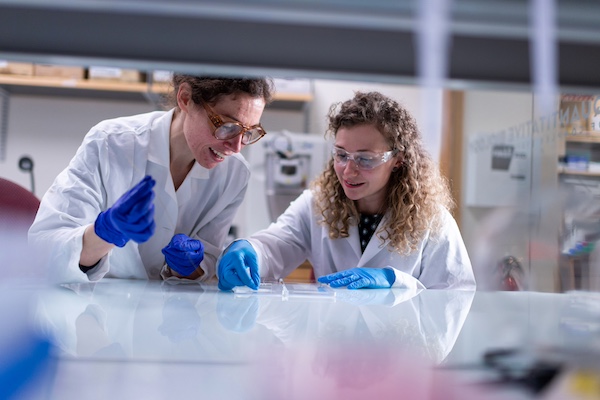Just as blood banks are essential to medicine, the Thomson Lab hopes to see the advent of artery banks that give surgeons a better, readily available material to replace diseased arteries. The lab is using pluripotent stem cells to grow the cellular building blocks of the artery — endothelial and smooth muscle cells — and coax them into assembling into arteries that can grow and thrive in a majority of patients.
Author: Brian Mattmiller
Turning T cells into better cancer assassins
Alexandra Walsh, an assistant scientist in the lab of Morgridge medical engineer Melissa Skala, is leading a project to use non-invasive fluorescence imaging to identify and sort T cells for use in cancer immunotherapy treatments. The technology won a 2018 Innovation Award from the Wisconsin Alumni Research Foundation.
Imaging the zebrafish, one cell at a time
A new imaging project at the Morgridge Institute for Research might be the biology equivalent of a 19th century expressionist painting. Think Van Gogh’s “Starry Night,” a constellation of tiny lines of color combining into a powerful image. Except the canvas of this research project will be a zebrafish, and the paint will be individual cells of a developing embryo.
Morgridge, Meriter research project targets the persistent risk of preterm birth
Of the approximately 4 million births in the United States each year, at least 400,000 of them still trigger a state of desperation in maternity wards. Parents, doctors and medical staff feel this way over the challenge of managing high-risk pregnancies.
Chasing ghost particles with armies of computers
Scientists with the IceCube neutrino detection project, located on the South Pole and run by the University of Wisconsin–Madison, announced in July that they found the origin point of a cosmic neutrino in an energy-spewing black hole 4 billion light years from Earth. Scientists say the discovery will provide a fundamental new tool for seeing the unseeable in the universe.
